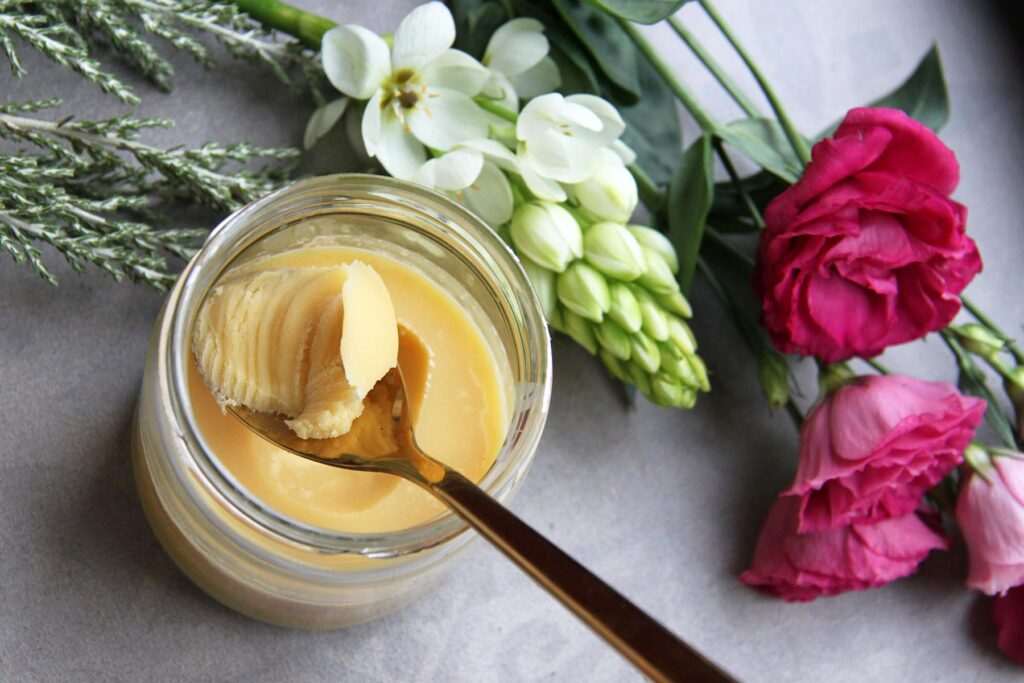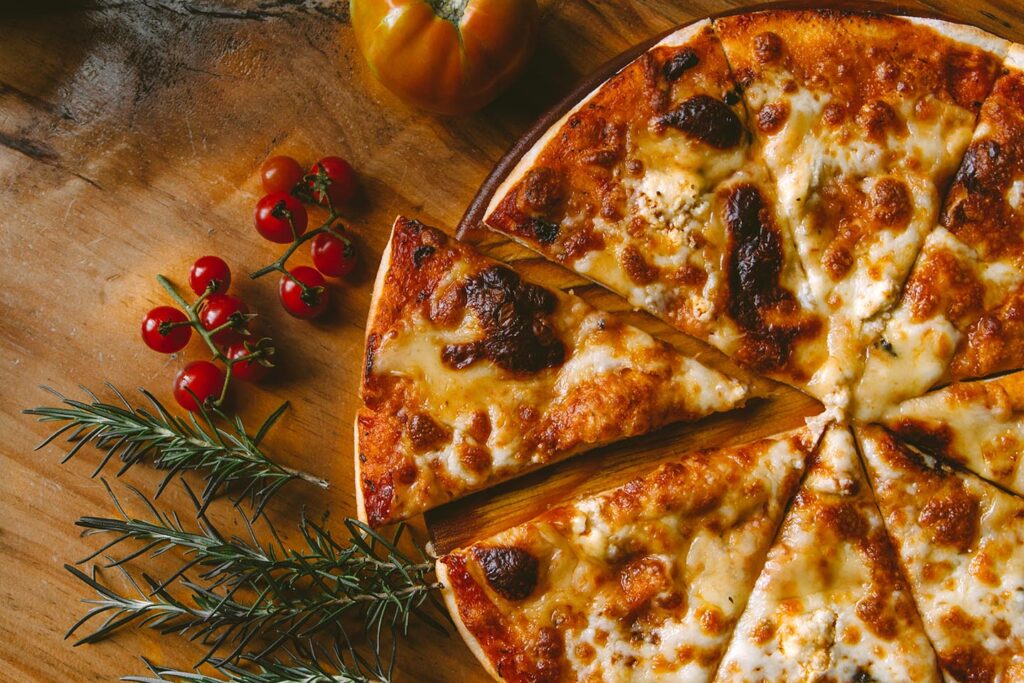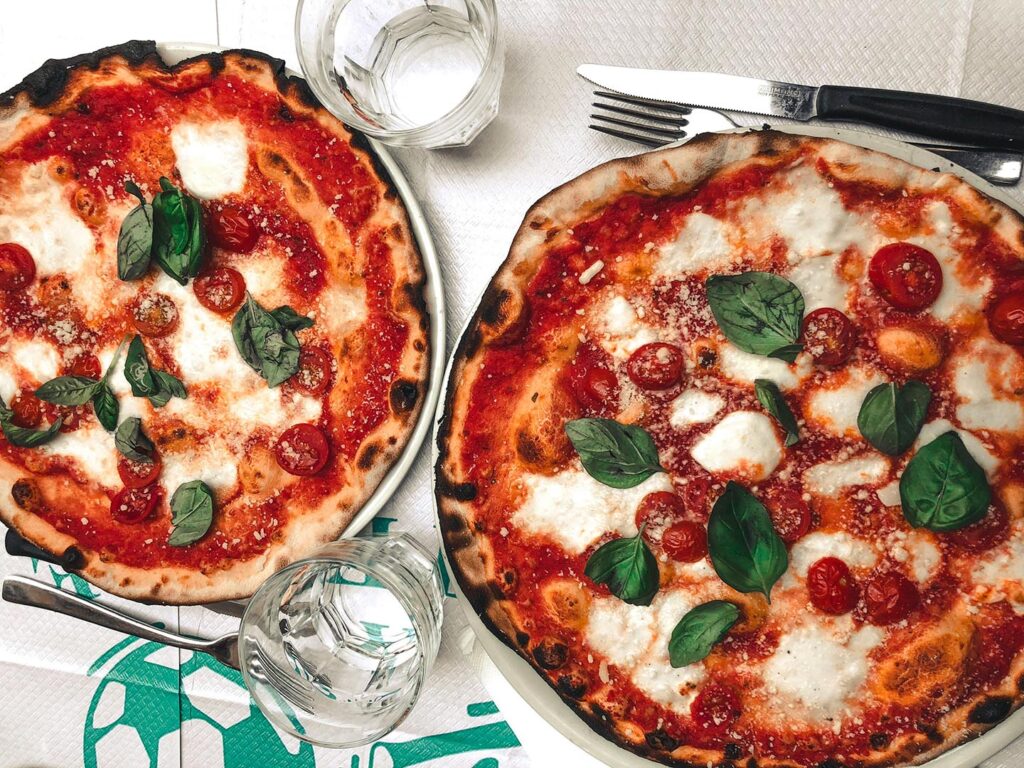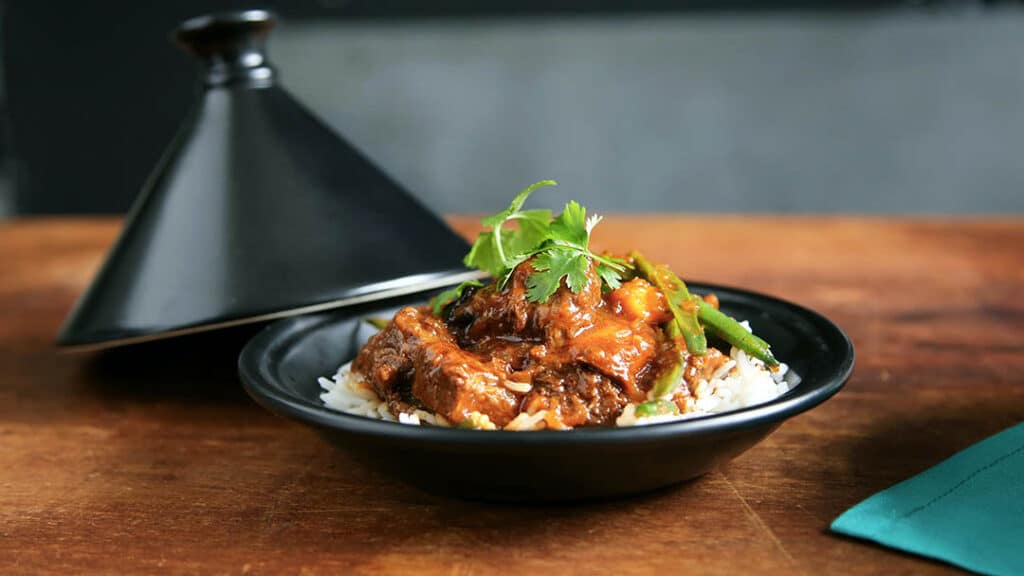
Almost every culture has its distinct version of a long-simmered stew bursting with tender meats and veggies, cooked over low heat for hours. The specific contents, spices, flavor, and cookware needed to prepare the dish varies widely from region to region, making each a unique part of our diverse culinary world. A popular long-simmered stew called tagine, or tajine in French, hails from Morocco and is both the name of the stew and the name of the vessel used to cook it.
Moroccan tagine is a beautiful combination of sweet and savory aromatics, spices, vegetables, and meats. Since this is a slow-cooking stew, just about any cut of meat or hard vegetable is perfect to use since it will tenderize while it cooks. From tough beef cuts to chicken, fish, legumes, chickpeas, vegetables, and eggs – the dish works perfectly for just about anything.
What is a tagine vessel or pot?
The vessel or pot is a shallow clay dish with a conical-shaped lid that seals completely when cooking. The shape helps the food inside stay moist as it cooks without adding extra liquid. It was originally created in the 18th century from clay, but modern tagine vessels can be made from a wide variety of materials, including enhancements or glazes, for better heat resistance and decorative purposes.
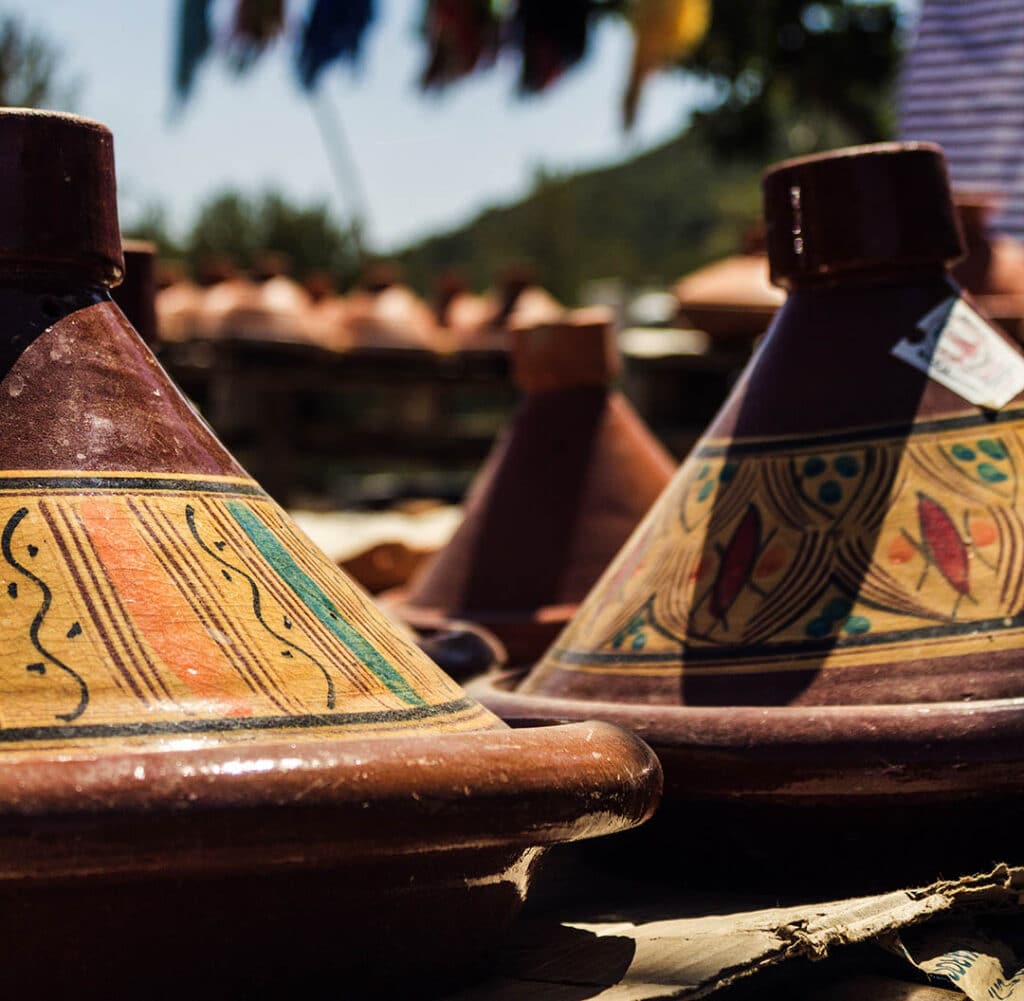
Does the dish have to be made in the tagine vessel?
If you want to try to create this dish at home, you don’t necessarily need to have a tagine pot. The dish’s name comes from the specific vessel; however, as we stated at the beginning, almost every culture has a long-simmered stew, and another vessel more popular for another culture’s long-simmered stew can work. Try making the dish in something like a slow cooker or a Dutch oven. The main difference will be in the final flavor. A traditional tagine has an earthy flavor from the clay used to make the pot; using a cast iron Dutch oven will impart a very different flavor.
So, what exactly is tagine (the dish, not the pot), and where did it come from?
The history of tagine, like many traditional cultural dishes, is difficult to pinpoint exactly when it first appeared or who first created it. It is said that a similar dish was described in Arab recipes back in the 9th century but didn’t become popular until the 18th century. It is also noted that the dish we know today evolved from a mix of influences from Algerian, Arabian, Berber, Egyptian, and European cultures, among others.
The dish’s contents vary wildly; however, it usually features either lamb or chicken with fresh herbs, spices, vegetables, dried fruits, and nuts. Other possibilities include preserved lemons and olives, almonds, apricots, beef, prunes, meatballs, fish, vegetables, beans, tomatoes, eggs, and more. The sweet and savory flavors come together magically in the tagine with a rich earthy aroma from the vessel itself.
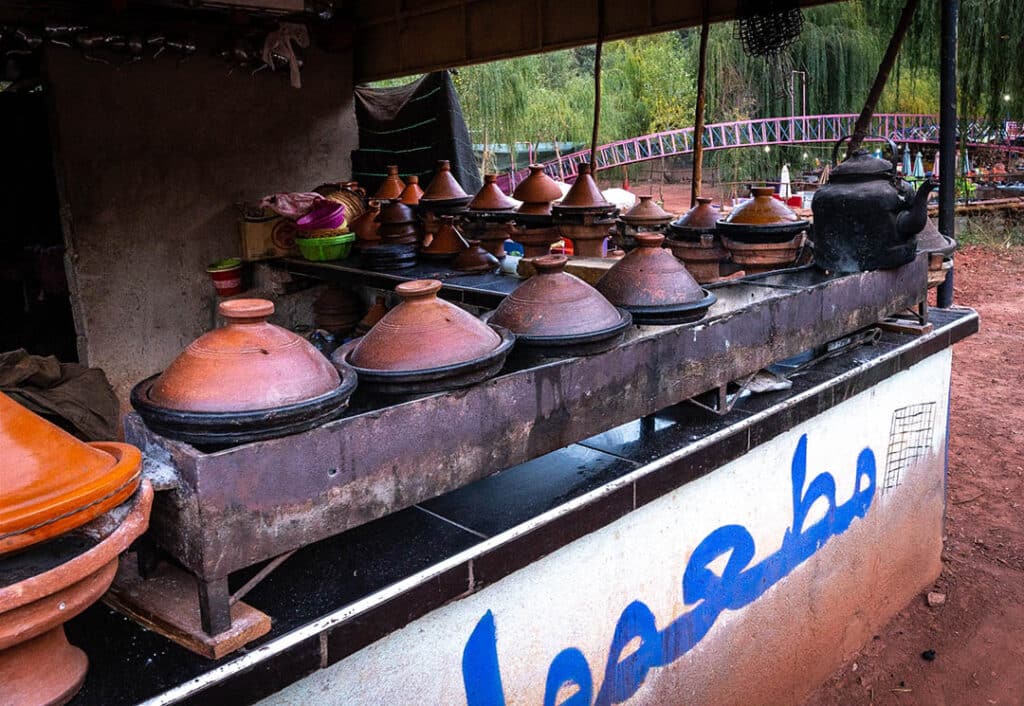
What spices are used to create the dish?
Much like the rest of the stew’s contents, the spices used vary depending on the region. Many prefer the iconic Moroccan spice blend known as ras el hanout, which contains dozens of ingredients, including saffron. Other spices may include cardamom, cinnamon, clove, coriander, cumin, ginger, nutmeg, paprika, peppercorn, and turmeric, among others.
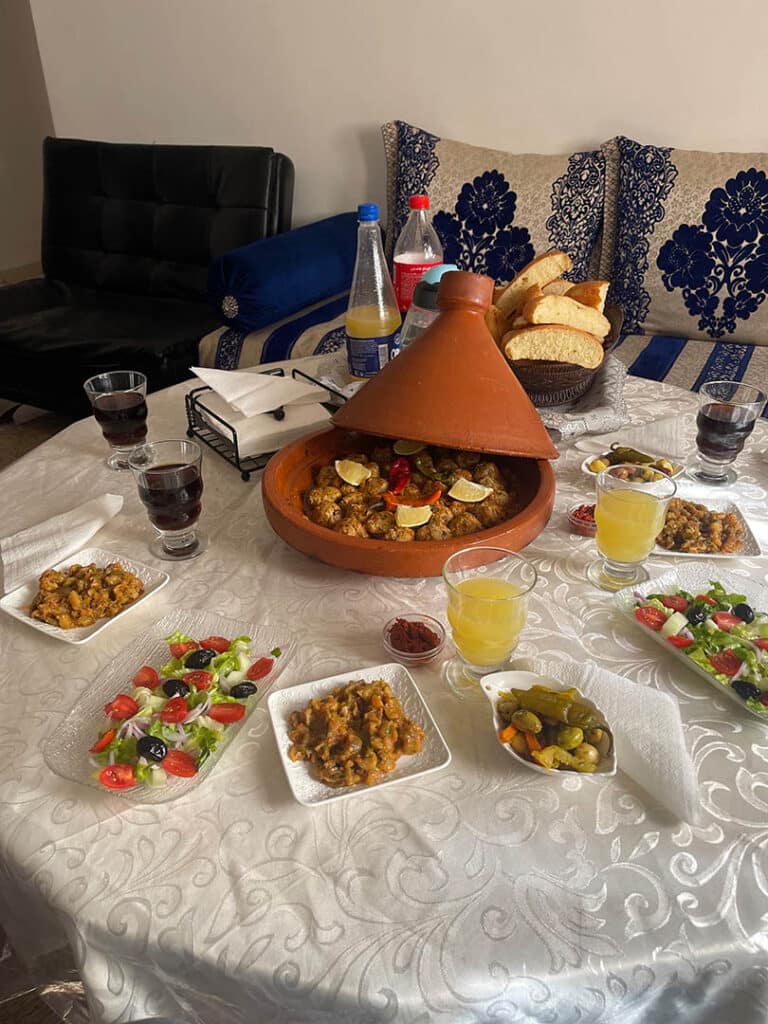
How is the dish prepared?
Tagine is really all about layered ingredients. Unlike some other long-simmering stews, you don’t want to toss everything in all at once and leave it to cook. You also do not want to brown your meat before adding it.
In a nutshell, the dish is created like this:
- You begin by spreading your vegetables on the bottom of the vessel to create a bed to layer the rest of the ingredients.
- Next, add olive oil.
- Add the meat after that, and surround it with the vegetables.
- Season everything.
- Lastly, add any aromatics or extras to the top –fresh herbs, dried fruit, nuts, preserved lemons, olives, and more.
- Cover with stock or water.
- Put the lid on, turn on low heat, and let cook.
- When the meat is tender, eat!
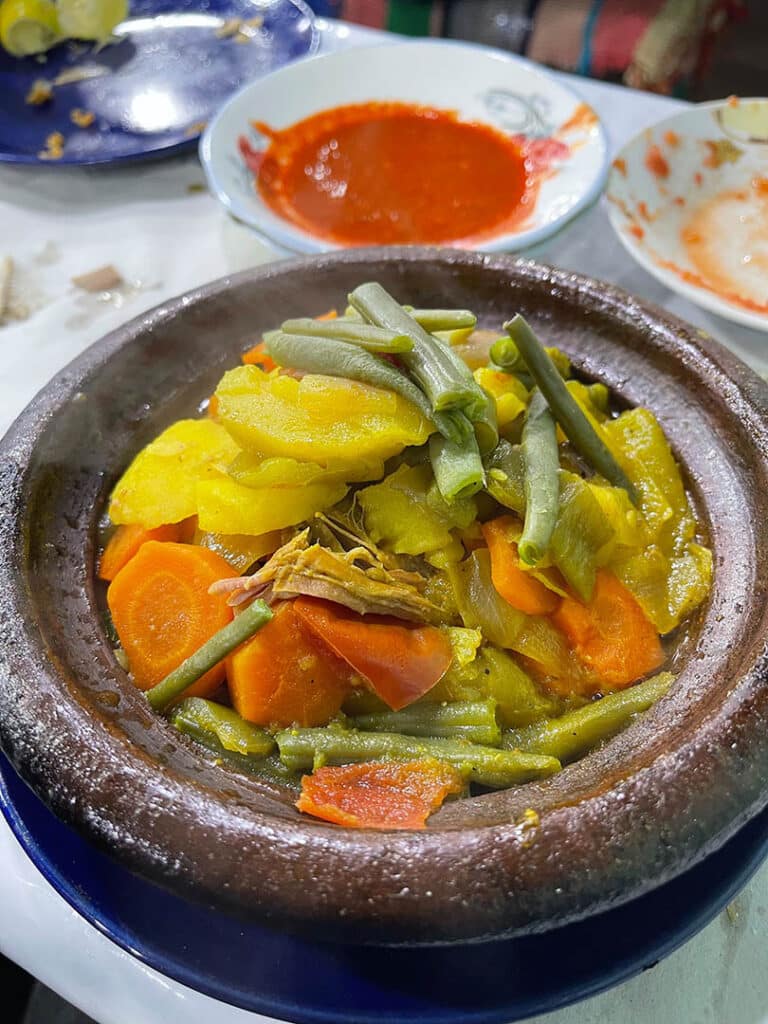
Want to make this dish at home?
- Click HERE for a traditional recipe with lamb and apricots.
- Click HERE for a recipe with chicken that you can make using a Dutch oven.
- Click HERE for an all-vegetable (vegan and gluten-free) recipe you can make in a large pot or Dutch oven.
Fun fact: Did you know that Moroccan tagine was one of the top new dishes created for NASA astronauts heading to space?
What do you think about tagine? Have you ever had this amazing dish? Let us know in the comments!


